
FALL 2023 — NEWS FROM THE CHICAGO WORKERS COTTAGE INITIATIVE
A Celebrity Cottage Restored
The upcoming Open House Chicago 2023 on Oct 14-15 includes a workers cottage for the first time. The Walt Disney Birthplace is a two-bedroom frame house at 2156 N. Tripp Ave in the Hermosa neighborhood. The famous creator of Mickey Mouse was born in an upstairs bedroom in 1901 and lived the first several years of his life here.
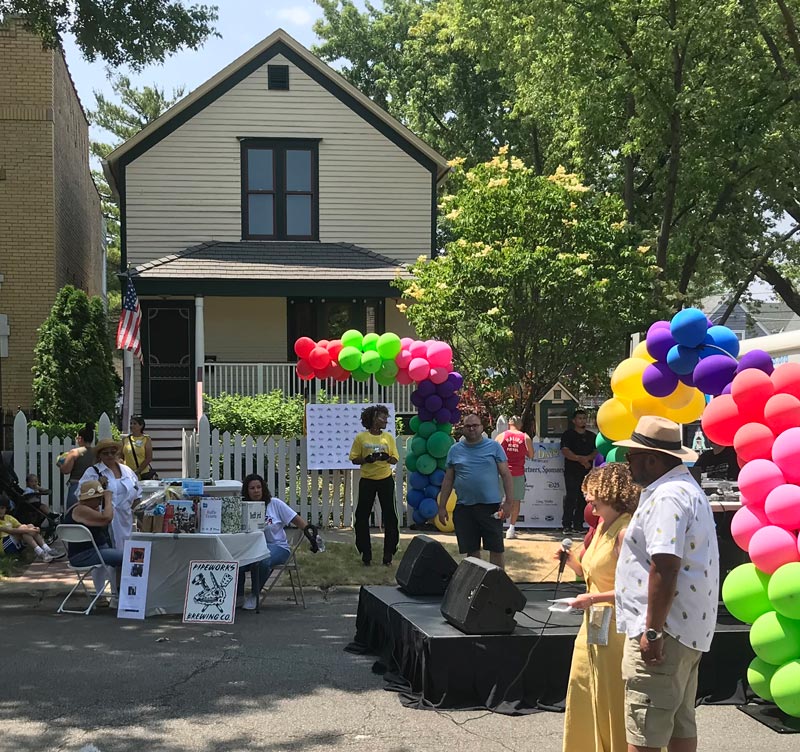
Creativity Days Block Party at the Walt Disney Birthplace 2023
Walt's parents Elias and Flora came to Chicago in 1890 after an unlucky attempt at growing oranges in Florida. Elias found work as a carpenter at the World's Columbian Exposition and lived in a rental house on the South Side. In 1891 the family purchased the empty lot at the corner of Tripp and Palmer when the area was still largely undeveloped prairie. A year later they began building. Flora drew the house plans and purchased the necessary materials, at a cost of about $800. Elias saved money by building much of the house himself. The finished two-story woodframe cottage was just 18 feet wide by 28 feet deep and likely originally sat at ground level without a basement.
The Disney family's two young boys were joined by baby Roy, born at the house in 1893. Later Walt was born here in 1901 and Ruth in 1903. Walt's older brother Roy would become his business partner in founding Disney Brothers Studios. Many years later, Roy recalled that the family house was painted white with grey trim and had an apple tree in the backyard, though this was where his father cut a switch to spank him when he misbehaved.
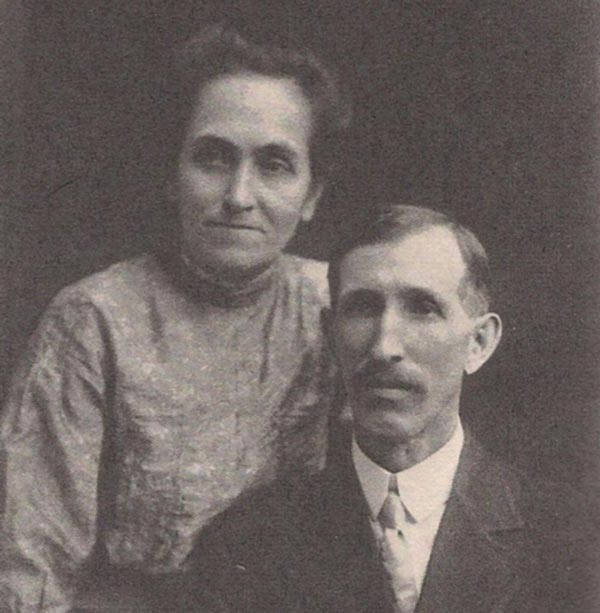
Flora and Elias Disney, 1913. Wikipedia.
Elias and Flora bought land and built two other similar cottages on Tripp Ave at 2118 and 2114 to sell and as rental property. He also helped build the nearby St. Paul Congregational Church at Keeler and Belden. But in time he apparently grew frustrated at the increasing busyness of houses in the area, and specifically the saloons which were multiplying all across Chicago at this time due to loopholes in city licensing laws. Seeking a quieter life in the country, the Disney family sold their house in 1906 and moved to a farm in Marceline, Missouri. Ever restless, they would move again after four years to Kansas City, and later returned to Chicago's Near West Side where Walt graduated high school.
The cottage at 2156 N. Tripp was altered extensively over the years, like many frame workers cottages. It was raised in 1924 when a new brick foundation and basement was built underneath. A covered front porch and rear addition added more space. Later in the mid 1960s, the porch was removed and the clapboard covered with aluminum siding. At some point it was split into two apartments.
In 1991, the Commission on Chicago Landmarks proposed landmarking the building as the birthplace of a worldwide celebrity. But the owner was opposed to the idea, fearing the designation might hurt the resale value of the property. A 1997 City Council vote only received support from one alderman for landmarking the house. Under its tired aluminum siding the house didn't look much like a historic place.
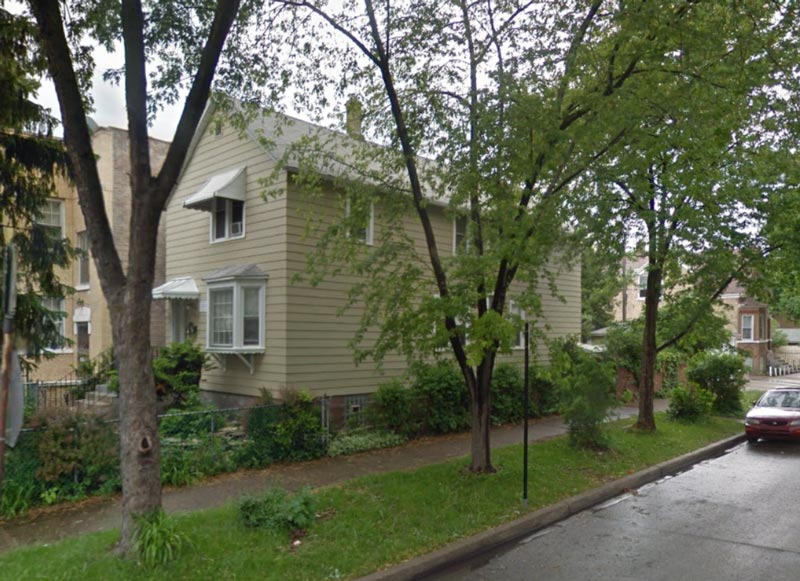
Google Streetview image of the house in 2011
Dina Benadon and Brent Young bought the house in 2013. The California couple imagined opening the house as a interactive museum of creativity. With help from fundraisers, donations and a generous grant from the Walt Disney Company, they assembled a team of preservation experts to restore the cottage to its original appearance on the exterior and interior.
Peeling off the siding, they revealed the old clapboards underneath. Historic photos showed the original locations of the tall double-hung windows. Analysis of layers of paint revealed the original colors. On the interior, much remained of the floor plan to allow rebuilding the original layout of the rooms. Fragments of Elias Disney's original woodwork even survived, which guided the restoration of the interior trim, stained dark in Victorian-era style. The restoration was complete in 2019.
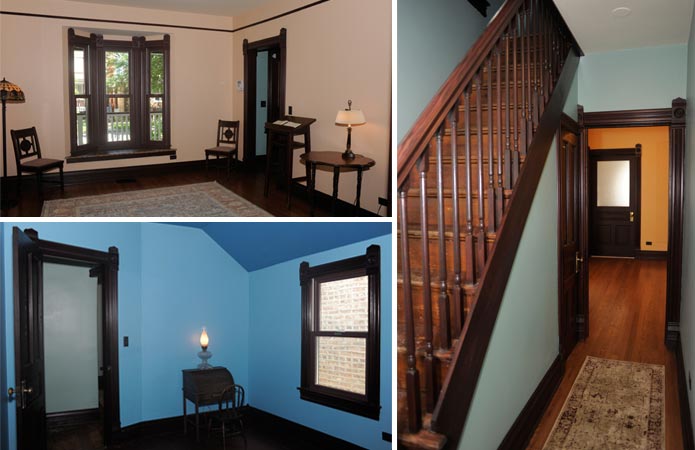
House interior restoration 2019. Walt Disney Birthplace website.
Phase Three of the house restoration, which is not yet complete, includes a plan to open an interactive museum and children's creativity center in the space. In the mean time, the restored house is a remarkable recreation of a typical workers cottage as it may have appeared in the early 1900s. Around the country, many houses of the wealthy from that time period are open as public museums, but there are few examples of more modest homes, especially in urban areas, showing how the majority of Americans lived. Visitors to the Walt Disney Birthplace who own workers cottages might imagine how their own houses may have looked at that time.
The Walt Disney Birthplace site will be open during Open House Chicago on October 14-15 from 12-4pm
McKinley Park Tours
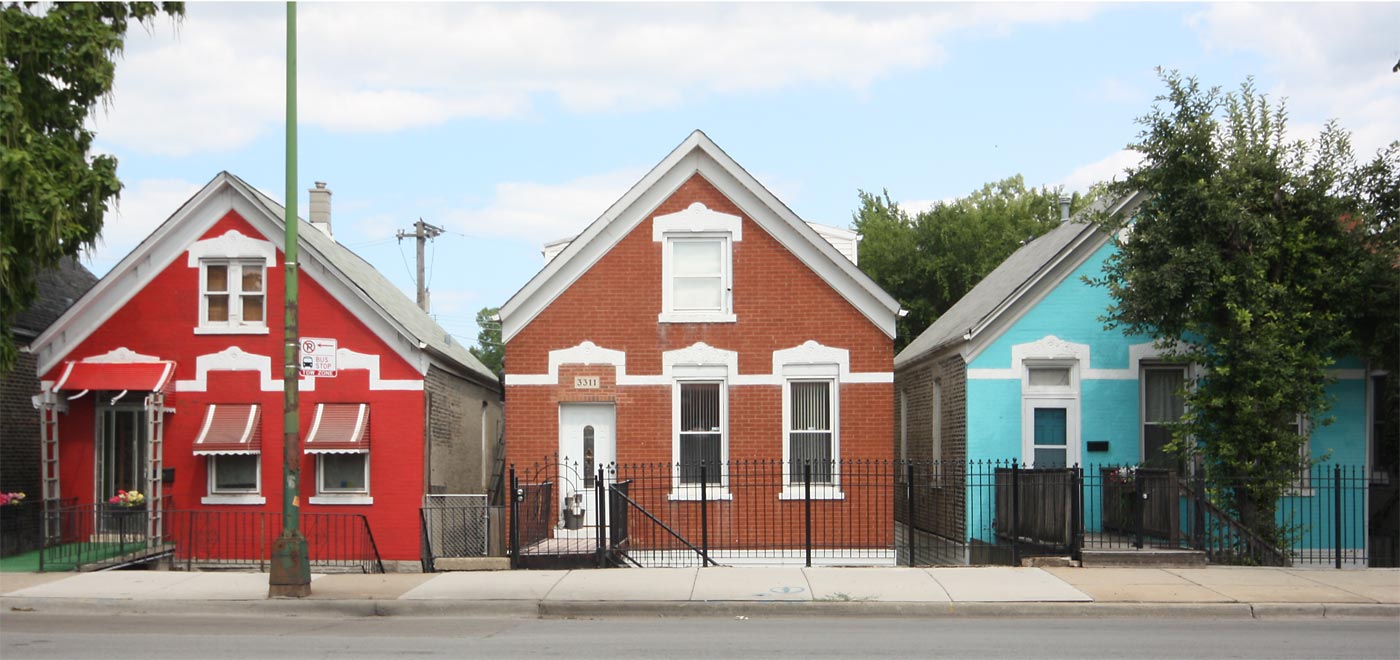
The Chicago Workers Cottage Initiative is debuting a new walking tour this fall in the McKinley Park neighborhood. Our 2022 field survey determined that over a third of the houses in McKinley Park are workers cottages. Come along with us for a stroll to see some of the densest groups of cottages in the area. Learn about how these vernacular houses were built and have changed over time, and hear stories about long-ago residents and look for remnants of the nearly-forgotten neighborhood of Mopetown.
Our tours are offered on a pay-what-you-wish basis, but space is limited on each tour. Tours will be offered on Saturdays October 21 and November 4 at 2pm. The tour will last about an hour and a half and involve about a mile of walking. Reserve your ticket today!
Lend a Hand
Come chat with the Chicago Workers Cottage Initiative at the upcoming Logan Square Volunteer Fair! The fair will be held on Sunday, October 22 from 11am to 3pm at The Joinery at 2533 W. Homer St.
We could use your help with a number of projects researching workers cottages and spreading the word about their preservation. Find a list of possible volunteer opportunities on our website, or come see us in person at our table at the Volunteer Fair soon! For more details of the event follow @thevolunteerfair on Instagram.
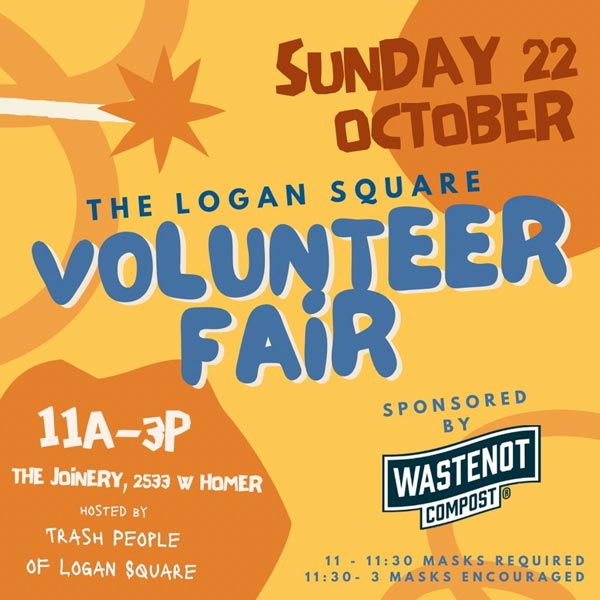
Lost Cottages
Chicago continues to lose workers cottages and other vintage homes at a steady pace. In gentrifying neighborhoods houses are usually torn down by choice rather than necessity. New buyers choose to replace the houses with larger buildings which are usually more expensive than what stood there previously. The condition or charm of the existing house which might bring it value to a resident is not enough to outweigh the financial incentives that drive developers to keep building repetitive luxury housing.
Here are some last glimpses of workers cottages demolished in the past several months.
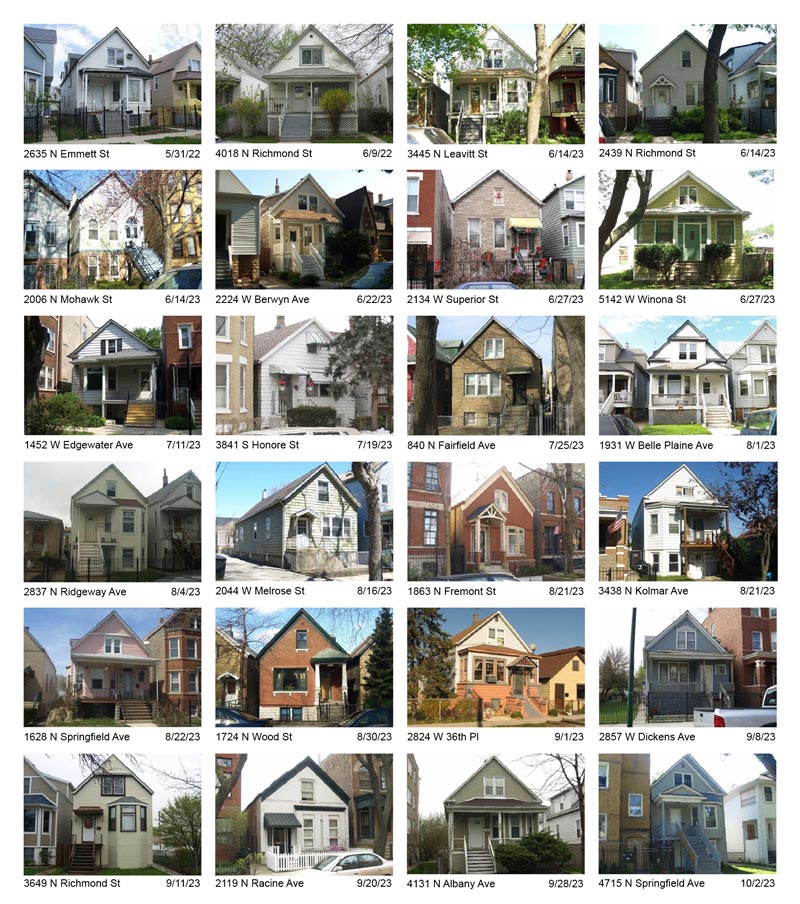
Images from Cook County Assessors Office via Chicago Cityscape
Copyright © Chicago Workers Cottage Initiative
Follow CWCI on ![]() Instagram —
Instagram — ![]() Facebook —
Facebook — ![]() LinkedIn —
LinkedIn —  Bluesky
Bluesky
 Join the Chicago Workers Cottage Initiative mailing list - unsubscribe
Join the Chicago Workers Cottage Initiative mailing list - unsubscribe
